#3D Model Printing training
Explore tagged Tumblr posts
Text
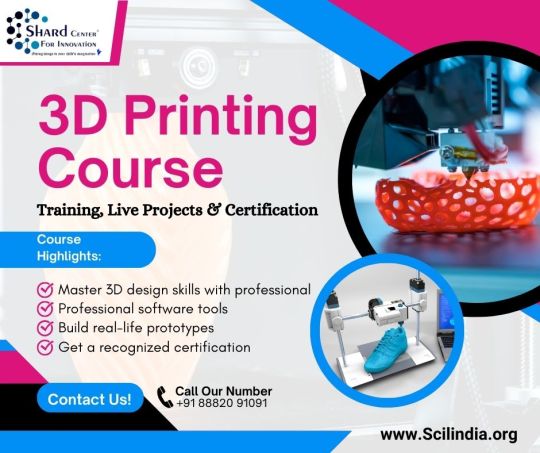
Master in 3D Design with our top 3D printing course with Certification. Learn how to build prototypes with live training & 3D design workshop. Unlock the future of manufacturing with India’s leading 3D Printing. Whether you're a student, hobbyist, or professional, this course helps you master the art of 3D design and printing through expert-led training, real-time projects, and hands-on workshops. ✅ Course Highlights: 🧠 Master 3D design skills with professional software tools 🖨️ Learn complete 3D printing workflow from design to prototype 🛠️ Build real-life prototypes through live training sessions 🏆 Get a recognized certification upon successful completion 🧪 Participate in interactive 3D design workshops and projects 🚀 Ideal for careers in engineering, product design, architecture & education 📢 Enroll now and start creating the future — one layer at a time! Visit: https://scilindia.org/courses/3D-printing-course
0 notes
Text






Haven't post it here yet but over the new year i painted Thunder model as a pet project! I'm really proud of how he turned out. Here is he with his great great peepaw and meemaw (official figure) as reference!
#httyd#how to train your dragon#the model is from the game#as to why thunder its the only model that the 3d print doesnt outright hate i was gonna do triple stryke or thunderdrum#probably a very beginer friendly too#sand wraith would be a pain to paint#tnr#httyd tnr#the nine realms#toothless#light fury#night fury#thunder the night light#night light#thunder httyd#thunder tnr#dragons the nine realms#dreamworks dragons the nine realms#dragons: the nine realms#dreamworks dragons: the nine realms
46 notes
·
View notes
Text



A 3d printed roll on roll off car ferry for BRIO trains! I have the .stl files if anyone else wants to print this!
10 notes
·
View notes
Text
Time for some ✨self-advertising✨
introducing The Tabletop Railway, a collection of teeny tiny little trains that I've just made available to 3d print on thingiverse!
https://www.thingiverse.com/drmopp1966/collections/42936938/things

they're like. 4cm long they're tiny
I'll be releasing some track and scenery so look out for that (or don't you don't have to)
there are currently seven engines available (and one truck). I might make more I might not, we'll see if people like them 🤷
#not expecting anyone to print any of these but#we'll see#the tabletop railway#(making a tag for this just in case I make any more and post them)#model trains#toy trains#3d printing
4 notes
·
View notes
Text
My 3D-printer is driving me nuts right now. It's a constant spaghetti festival whenever I try to print one specific thing. A thing that was printing perfectly fine yesterday but today it just won't. Everything else works just this one model...
4 notes
·
View notes
Text

recent acquisitions
#got the normal miku pup locally since i won some cash in a raffle but the rest have been on their way to me ffe#i lowkey have ulterior motives (video essay on deco27 where i want her to hold the mic) for that vampire miku#but the window figures i've been going on abt loving forever and i found them for cheap when i Already Had A Buyee Order and thus needed to#grab smthing else to save on shipping . same w the world is mine nendo since i didn't start preordering nendos until after her window close#bc i learned my lesson missing out on teto synthv + maomao + tamaki back to back#now i just need my dad to pick up his vday gift to me (nendoll luka since he forgor to get me anything until the day of. ups are holding th#package rn bc ups is fucking useless). + wait for riliane and allen to ship (also missed their po so i had to get them off a us based shop#which gets them in later than gsc) + wait for infinity miku (also in shipping hell) and i'll have a brand new army of vocaloid figs#ooh i'll also print that one michaela 3d model when i get trained on the resin printer#+ i have to print gawainku as part of the current assignment . the mikus are taking over#romeo.txt
2 notes
·
View notes
Text
The Impact of Personalized 3D Banners
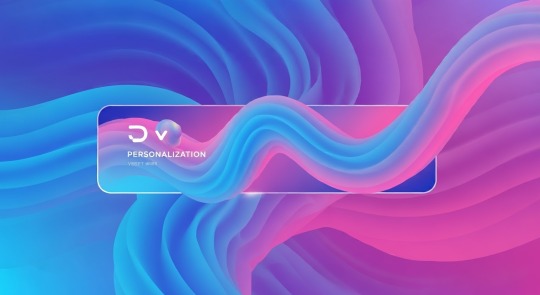
Get free designing tools for 3D image and banner design 👈
Enhanced Brand Recognition: By showcasing unique and personalized visuals, businesses can leave a lasting impression on customers. Increased Engagement: Interactive and personalized content encourages viewers to explore and interact with the brand. Greater Customer Loyalty: Personalized experiences create a stronger sense of connection and build lasting relationships with customers.
#3d printing#animation#3d image process#academia#artificial image#3d image producing#animals#artificial intelligence#adobe photoshop#adobe illustrator#graphic design#adobe lightroom#adobe indesign#3d ai image#3d animation design#3d modeling#3d image processing#ai image editing#ai artwork#ai image#ai model training#ai image generator#ai image creation#ai generated images
1 note
·
View note
Text
25 01 18 Pt 3 Finished HandCab-DC Throttle Sound Effects
youtube
1 note
·
View note
Text
#explore#barrie#roads#future#tech#model trains#data drive#podcast#ontario#episode 9#raspberry pi#3d printing
1 note
·
View note
Text
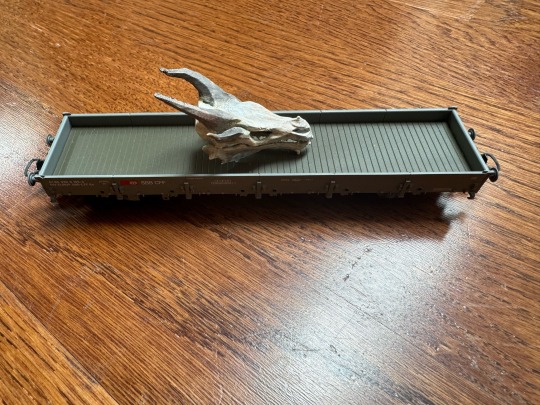
DRAGON SKULL TRAIN
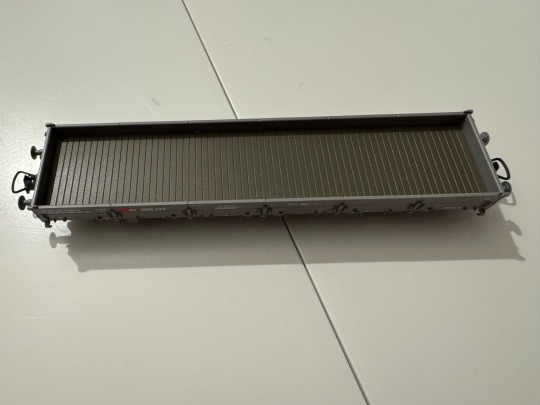
29 notes
·
View notes
Text
Hobby Ideas 🎨💻🎵🧁🪴
💰 Hobbies to Make Money:
Freelance Writing
Photography
Graphic Design
Web Development
Online Selling (e.g., Etsy, Amazon, eBay, Shopify)
Blogging
Stock Trading
Real Estate Investing
Affiliate Marketing
Freelance Consulting
💪 Fitness Hobbies:
Running
Yoga
Weightlifting
Cycling
Swimming
Martial Arts
CrossFit
Hiking
Rock Climbing
Dance (e.g., Zumba, Hip-hop)
☀️ Outdoor Hobbies:
Camping
Fishing
Birdwatching
Gardening
Geocaching
Kayaking
Mountain Biking
Backpacking
Stargazing
Horseback Riding
💻 Technology Hobbies:
Programming
Robotics
3D Printing
Virtual Reality (VR) Gaming
Home Automation
Drone Flying
Cybersecurity
App Development
Electronics DIY
PC Building
🎵 Music Hobbies:
Playing an Instrument (e.g., Guitar, Piano)
Singing
DJing
Music Production
Songwriting
Music Recording
Karaoke
Music Theory
Joining a Band or Choir
Vinyl Collecting
�� Brainy Hobbies:
Chess
Sudoku
Crossword Puzzles
Board Games
Reading
Learning a New Language
Brain Teasers
Logic Puzzles
Math and Mathematical Puzzles
Astronomy
✨ Other Hobbies:
Cooking and Baking
Painting and Drawing
Pottery and Ceramics
Woodworking
Knitting or Crocheting
DIY Home Improvement
Model Building (e.g., model trains, airplanes)
Collecting (e.g., stamps, coins, vintage items)
Volunteer Work
Meditation and Mindfulness
#hobbies#creative#creative inspiration#inspiration#creativity#creating#learning#skills#life skills#advice#life advice
742 notes
·
View notes
Text
Exactly one week left to go until my exams and I'm getting very dizzy with how nervous I am...
Things are getting real, today next week I will write what will make up 30% of my final grade and I'm shaking. I want to throw up and hide until it's over, this is so stressful.
#linkle cad enigneer in training#beginner 3d modelling#newbie at 3d printing#help how do i do this?!#can someone else write them for me?
3 notes
·
View notes
Note
how did you learn to render realistic light/volumes so well? your work looks real to my eyes in a way i cannot wrap my head around
I mention having studied as a sculptor for 4 yrs a lot when I get asked about my process but I really do think it was extremely helpful to my 2D art progression (more than anything else, really - I kinda sucked at sculpting).
It hardwired my brain to think of everything I make in 3D terms. Even when we were doing figure studies on paper, it was emphasised that we imagine the figure in three dimensional volumes, and pay attention to how the light and shadows wrapped 'round each individual form. Now, when I paint, I think of "sculpting" the painting out with my brush - when I add shadow to a cheekbone, I imagine I am smoothing the form away with my thumb in order to make the plane of the cheek curve more towards the darkness, and I imagine the different values within that shadow area as well. When I carve out a piece of the nose to form its shape, I think of how this new shape affects the shadows it is casting on the cheeks or mouth. Knowing exactly where your light source is from the start is very important for this.
And I know "think of everything in 3D and imagine the light/shadows wrapping around an object" is super common advice, but I don't think a lot of people mention that it's not just a mindset you can slip into immediately, it's something you have to train up just like any of your other art skills. You kinda have to brute force yourself to ignore that you're working on a flat canvas, and let go of all shorthands (instead of only visualising the nose as a flat image, as it exists in profile in the image you're referencing, imagine how it might look if suddenly the model turned their head towards you. Think of how the planes of the nose are curving away from you to create that rounded shape of the tip, think of what you can't see but you know exists on the other side, etc.)
But of course, it's hard to do this if you've never studied what a nose looks like at different angles. You need to build your mental library so you can enter that space easier. So 3D reference in general is still very important to me; I work better when I can spin something around and see how the light changes or curves because it helps me understand it, rather than just copying what I see in flat 2D ref. I rarely guess at anything I'm not sure of - whenever I need them, I either take references of myself or someone I know, and sometimes I use a simple head sculpt I made in blender ages ago when I'm lazy/need to figure out a more complicated lighting situation. I treat every drawing as a learning experience and try to solidify more of my existing knowledge through it. I even had a small head I'd sculpted in real clay for a while. When I'm in the mood for doing studies I'll sometimes set up a bunch of different lighting scenarios with the 3D head or a 3D-printed skull I have and do quick micropaintings, to refresh my memory. One of the other things I do, for example, is take a flat reference imagine whose lighting I like, re-create that lighting in 3D, then turn the 3D head around to see how it would look under that light source at different angles.
I'm also constantly observing things in the real world. Whenever I'm watching movies my eyes and brain are immediately drawn to the lighting and colors, how the shadows change whenever someone retreats from dark into light etc. I make notes of these or screenshot to do studies later. Whenever I'm hanging out with people and I notice an interesting lighting situation happening I ask them to let me take a picture so I can study it later, or add it to the reference vault. I love to people watch, I look at nature, I'm probably the spaciest person to hang out with but it's helped with the art lmao. Again, this is also something that you can consciously train yourself to do, it didn't come innately to me.
And uhh, honestly sometimes I think it helps that I use a lot of dramatic lighting in most of my portraits. It's easier to sort of "cheese" three dimensionality when you have such a defined separation between dark and light. The first thing I do is paint in the darkest shadow on any painting, then work outward from that. You can use things like the shadow's penumbra, the terminator shadow and ambient occlusion to push the three dimensionality further.
Anyway in relation to this I think of painting more in terms of value rather than color. I don't paint in b&w but over time I've come to learn the values of colors instinctively, though I sometimes apply a black and white filter on top and toggle it on whenever I wanna check if I'm on the right track. Then on top of that, apply colour theory such as different coloured bounce light and sub surface scattering, the colors in different zones of the face, etc.
To summarise, it mostly comes down to studying a lot, training yourself to visualise everything in a 3D space, being observant, making every drawing a learning experience, and training yourself to discard what you 'think' an eye or mouth looks like so you don't fall back on those shorthands whenever you're drawing something more realistic. Grab some clay and make a ball, do some studies of it.
Hopefully this helped shed light on my thinking process in some way; explaining things is usually when I remember english is my second language, I never know if I'm making any sense haha.
#text#as much as training myself to think like this has been helpful I also feel like it's been a bit detrimental#because I have a harder time making cartoonier more stylised art even when i want to.#also of course I am hugely inspired by artists who do a lot of realistic portraiture and I stare at their paintings a lot & save them#pinterest hates 2 see me coming
40 notes
·
View notes
Note
hello :) my current puppet making involves cardboard and tape- what is the material shown in your video? Looks very cool btw
Thank you! It's plastic canvas!
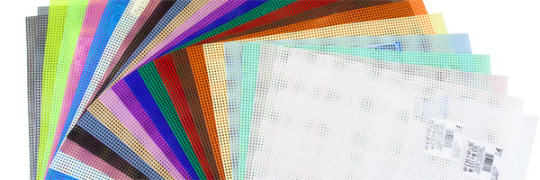
It's most often marketed to needlepoint enthusiasts who want a stiff backing for yarn projects. Grandmas use it to make tissue box cozies. Or to make cute little houses for model train villages. I'm going to use it to make some sort of terror bird muppet thing.

I chose plastic canvas because it's cheap and lightweight and flexible and pretty easy to assemble into a 3d shape. I usually use embroidery thread or nylon cord to sew it together because those are very strong, but you can just use regular yarn too. I sometimes use it to make craft kits for kids, seniors, and folks with fine motor impairments because it's a lot more durable, forgiving, and easier to thread than cloth needlepoint canvas.
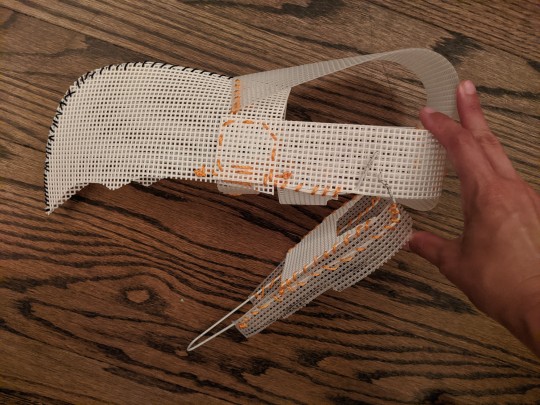
So far my whole puppet head assembly is just plastic canvas, thread, and two coat hangers to add sturdiness to the jaw. While I loved the idea of using a 3d printed structure for the head (this method currently seems to be popular with fursuiters), I think a big advantage of a plastic canvas frame is that it won't break if someone sits on it or drops it on the ground. I could throw this thing out of a moving car and it would just bounce. It will also be very lightweight, which is important because I expect to puppeteer it over my head Big Bird Style for an extended period of time.
250 notes
·
View notes
Text
Guy on tweeter: whenever i see ai art i realize what it looks like to not have a soul o_0.
Actual artists: I recorded two language learning models training each other for 9 months and projected the output into this 3d printed womb to explore anthrocentric notions of language and sentience. My dad is richer than yours
37 notes
·
View notes
Text
Simulation Assessment Model
Randomized Orb Value: G2Z4E11
Projection Test Type: C
History Proposal:
On the train, denizens take many forms. Dogs, rock people, paper cranes, giant pig babies, and more. Although all of them are artificial beings projected through orbs on a perpetual train, it is an unfortunate fact that denizens only live a "normal lifespan" for whatever they are created as. Corgis have an average lifespan of 14 years, and that is about as long as Atticus will live for example.
The Cat, however, is an outlier.
Well over a hundred and fifty years old - in human years, not cat years - her unusual longevity shows no signs of stopping anytime soon. While no official statements nor more episodes have been made to help shed light on the mystery, I would like to preface my theory with a bit of context:
One of the oldest traditions in software is what is known as a "Hello, World!" program. In total, this program instructs a computer to display a message similar to the titular "Hello, World!" Simple and succinct, it is one of if not the first program students of new programming languages learn how to code. And with its simplicity, "Hello, World!" can be used to ensure the code compilation software has been installed properly and that the operator is using it correctly.
Similarly famous and historic is the "Utah teapot." Coming from the world of 3D modeling and computer graphics, it possess features familiar to many simple teapots: a spout, a handle, and a curvy shape. Lacking a need for surface textures, capable of casting shadows on itself, and possessing a decently complex yet easy to make model, it has been regarded a "perfect self contained object to test the creation of three-dimensional images." Even with today's advanced technology, it is still regarded as an effective standard reference model for beginners and experimenters alike.
Moving into the burgeoning field of 3D printing, one can find "Benchy," as well as its upcoming replacement "Boaty." Respectively a boat and a bench, these two unofficial models have been growing in popularity over the years, often finding themselves among many people's first prints. Either on a newly set up 3D printer, or with a new 3D printing material one hasn't used before. Whether through measuring a Benchy/Boaty's dimensional accuracy, checking its surface quality, and observing other attributes like overhangs (or the lack thereof), they are shaping up to become the next "Hello, World!" and Utah teapot.
In other words, the latest in a line of near ubiquitous benchmark tests for assessing the performance of a system upon first use.
With that established, picture a staircase where each step is a level of technology. From mere software to virtual models to physical printed objects, a few more steps is all it takes to climb aboard the Train. Memory tapes that hold an immersive snapshot of a person's mindscape. Wormholes that can disintegrate and reassemble people across time and space. An unknown level of influence over an entire parallel reality of reflections with all its existentially terrifying implications.
Orb-generated pocket dimension environments and so many intelligent and thinking people as denizens.
Maybe the reason the Cat doesn't have a normal lifespan like other denizens is because she isn't a 'proper' denizen in the first place. After all, the aforementioned benchmark tests lack the extra bells and features the systems they evaluate are capable of making when pushed. The original Utah teapot model didn't even have a base. So it's not hard to imagine the train's denizen creation system might have forgone extraneous programming like an artificial 'normal lifespan' limitation while performing startup checks, way back when the train first came online.
Thus, my proposal is that the Cat had started out as a benchmark projection for non-lifespan-related test requirements. Maybe her template just lacks the "normal lifespan" programming, and/or the "normal lifespan" programming was tested with a different, unfortunate benchmark projection. Either way, she served her vital system evaluation purpose and then got set aside as a no-longer critical part of the train. From that rock bottom, she could only go up from there. With a life as long as hers and having seen as much of the train as she has, there's so many potential answers for how she eventually transformed into the French con artist kitty we know today.
Like, for example, her collecting of many 'things.' It may seem like that's simply the norm she��s settled into by the present, but Simon's comment about how "she's collecting again" suggests it is actually her slipping into a bad old habit. As though rampant collecting is a coping mechanism for something. While the guilt from leaving Simon behind would easily explain such regression in behavior, therein lies the question of where said behavior came from in the first place.
If you ask me, I cannot help but look at the train of thought that started this all: Samantha lacking the programmed lifespan denizens have due to being a test object. Aka an immortal amongst denizens who will one day die, passengers who either die on the train or eventually disembark, and even car environments that are affected by time in ways she isn't.
Certainly makes one think about her having once gotten close enough with Simon for her to tell him to call her "Samantha," but now emphasizes to everyone she meets to merely know her as "THE Cat"...
#infinity train#infinity train theory#infinity train headcanons#it#it theory#it headcanons#the cat#infinity train the cat#infinity train samantha#the orb value and test parts are just fun little flavor text I made up#though the fun part is contemplating a few backstory options:#if there are others like her that she knows/have history with#Samantha being the only one to ever be created#or if she's one of/the last of her kind after the others met a terrible fate
8 notes
·
View notes